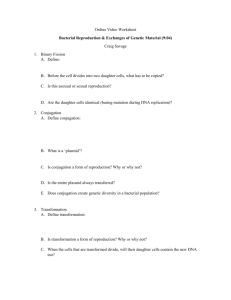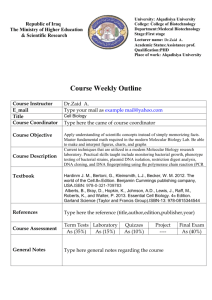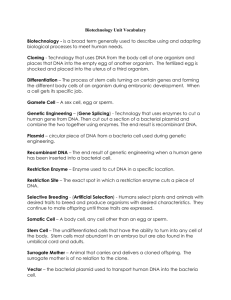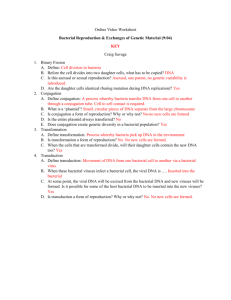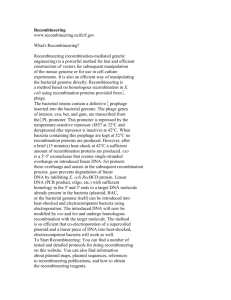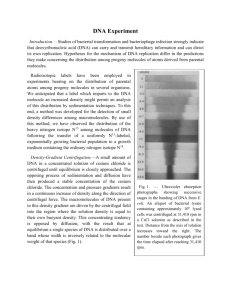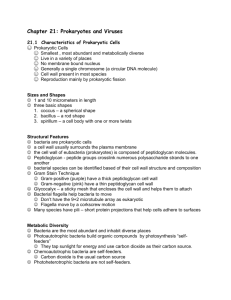Chapter 14 - Microbial Genetics: Mechanisms of Genetic Variation
advertisement
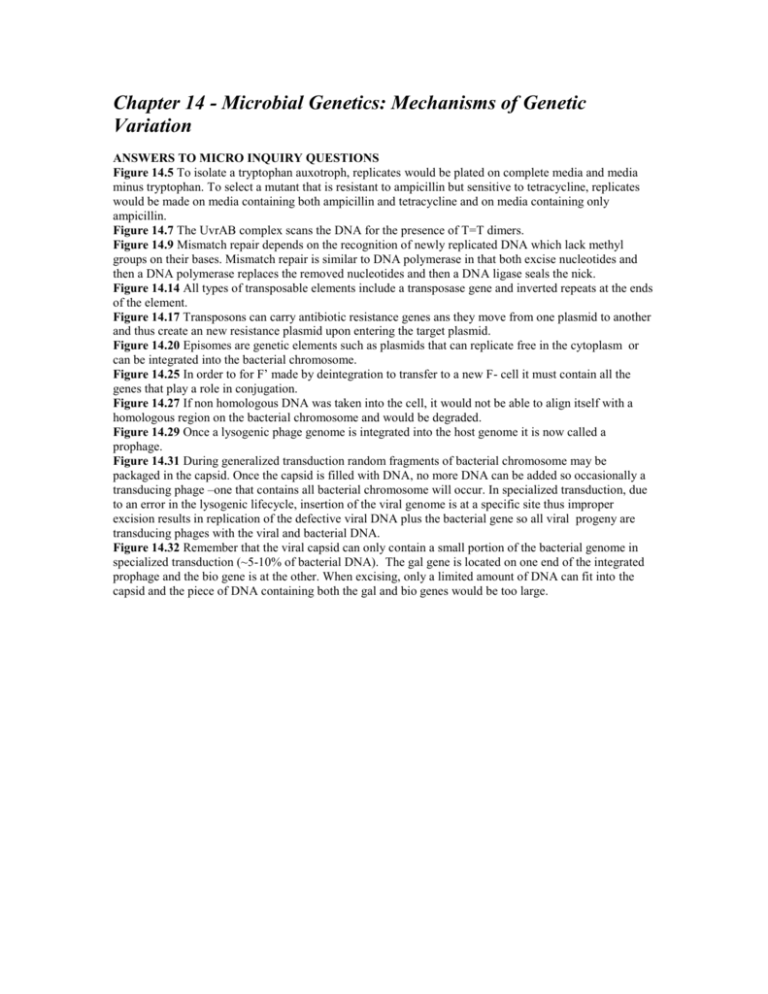
Chapter 14 - Microbial Genetics: Mechanisms of Genetic Variation ANSWERS TO MICRO INQUIRY QUESTIONS Figure 14.5 To isolate a tryptophan auxotroph, replicates would be plated on complete media and media minus tryptophan. To select a mutant that is resistant to ampicillin but sensitive to tetracycline, replicates would be made on media containing both ampicillin and tetracycline and on media containing only ampicillin. Figure 14.7 The UvrAB complex scans the DNA for the presence of T=T dimers. Figure 14.9 Mismatch repair depends on the recognition of newly replicated DNA which lack methyl groups on their bases. Mismatch repair is similar to DNA polymerase in that both excise nucleotides and then a DNA polymerase replaces the removed nucleotides and then a DNA ligase seals the nick. Figure 14.14 All types of transposable elements include a transposase gene and inverted repeats at the ends of the element. Figure 14.17 Transposons can carry antibiotic resistance genes ans they move from one plasmid to another and thus create an new resistance plasmid upon entering the target plasmid. Figure 14.20 Episomes are genetic elements such as plasmids that can replicate free in the cytoplasm or can be integrated into the bacterial chromosome. Figure 14.25 In order to for F’ made by deintegration to transfer to a new F- cell it must contain all the genes that play a role in conjugation. Figure 14.27 If non homologous DNA was taken into the cell, it would not be able to align itself with a homologous region on the bacterial chromosome and would be degraded. Figure 14.29 Once a lysogenic phage genome is integrated into the host genome it is now called a prophage. Figure 14.31 During generalized transduction random fragments of bacterial chromosome may be packaged in the capsid. Once the capsid is filled with DNA, no more DNA can be added so occasionally a transducing phage –one that contains all bacterial chromosome will occur. In specialized transduction, due to an error in the lysogenic lifecycle, insertion of the viral genome is at a specific site thus improper excision results in replication of the defective viral DNA plus the bacterial gene so all viral progeny are transducing phages with the viral and bacterial DNA. Figure 14.32 Remember that the viral capsid can only contain a small portion of the bacterial genome in specialized transduction (~5-10% of bacterial DNA). The gal gene is located on one end of the integrated prophage and the bio gene is at the other. When excising, only a limited amount of DNA can fit into the capsid and the piece of DNA containing both the gal and bio genes would be too large.
